Hagfish are long, eel-like fish that live in salt water. These fish are also occasionally referred to as “slime eels.” This is because of their ability to produce copious amounts of slime, which is oozed as mucous from glands along their sides. The slime is used to deter predators, because it can clog their gills. Read on to learn about the hagfish.
Description of the Hagfish
Hagfish are long and eel-like in shape, with a dorsoventrally flattened tail. This means that their tail is narrow on the sides and longer at the top and bottom, almost as if it were squished between a pair of hands on either side.
Their skin is very loose, and their skulls are made primarily of cartilage rather than bone. These fish range in color from pink to blue and grey, and they are occasionally covered in spots.
Interesting Facts About the Hagfish
These odd-looking (and let’s admit it, pretty ugly) creatures are very well adapted for survival. They have a number of specialized and interesting adaptations.
- Agnatha – Though they look similar to eels, they are actually not closely related at all. Instead, hagfish are in a group of fish known as the “Agnatha.” This group of fish lacks jaws, and also includes the similar lamprey.
- Plates – Instead of formal jaws, hagfish have pairs of dental plates that they use to grip prey. While they do hunt small organisms, they are also known to eat large carrion. They grip the decaying matter between their dental plates and tie themselves in knots to tear it open.
- Inside Out – Once they have torn open a carcass they will actually swim inside and eat the dead animals form the inside out! This proves to be a much easier feeding method than attempting to tear off chunks of the tough exterior tissue.
- Doing Without – Large carcasses do not occur very frequently. Because of this, when hagfish come across a meal they will eat voraciously. They have a very slow metabolism, and this allows them to go as much as a few months in between meals.
Habitat of the Hagfish
Because they feed primarily on carrion and small invertebrates like worms, these fish live close to the sea floor. Food either drifts down to them or is found along the bottom. They live within burrows in the ocean floor, commonly in the deep sea. Different species have different preferred habitats. Some species prefer muddy substrate, which allows them to burrow beneath the surface.
Distribution of the Hagfish
There are over 75 different species of hagfish found throughout the world’s oceans. Each species has a different range. The Atlantic hagfish and Pacific hagfish live in the Atlantic and Pacific Oceans (respectively). Broadgilled hagfish are found near New Zealand, and gulf hagfish are found in the Gulf of Mexico and the Mediterranean Sea. There are different species of hagfish found virtually worldwide.
Diet of the Hagfish
While large carcasses are a great food source, they are not very consistent. The bulk of these fish’s diet consists of marine worms found in the mud of the sea floor. Worms and crustaceans are the only live prey that they can consume, but they eat a wide variety of carrion.
Analysis of stomach contents has shown that these fish will prey on dead whales, fish, sharks, birds, and more. When feeding on carcasses they tie themselves into knots to rip open the tough outer flesh before eating the animal from the inside out.
Hagfish and Human Interaction
These fish are commonly viewed as a nuisance to fishermen, both as slimy bycatch and because they will prey on captured fish before they are pulled to the surface. This is especially a problem to deep trawl nets that capture prey along the sea floor. The slime usually keeps these fish from being useful as food, but the inshore hagfish is eaten in Korea.
Domestication
Hagfish have not been domesticated in any way, but the use of their slime has been investigated for various medical and fashion uses. Researchers are studying the use of hagfish slime protein as a sustainable fabric. If they were used as clothing or for medical purposes, long periods of selective breeding could lead to semi-domestication.
Does the Hagfish Make a Good Pet
No, because they produce so much slime their habitat would require almost constant cleaning.
Hagfish Care
In aquariums these creatures must be kept in adequately large tanks that filter almost constantly. The slime produced can harm other fish if it is not cleaned constantly. It is also important to keep them with non-aggressive fish species so they do not produce extra slime from being attacked. They can be fed virtually anything, and will eat the leavings of other fish in the aquarium.
Behavior of the Hagfish
Most species are nocturnal, which means that they are more active at night. During the day, they hid in burrows in the mud or silt on the sea floor. At night they use their strong sense of smell to locate prey or carrion.
Because their metabolism is so slow they are able to go up to a few months between meals. Some species are solitary, and some live in large groups. Most will congregate at a large carcass and feed together.
Reproduction of the Hagfish
Only a few species have been successfully reproduced in a laboratory by researchers. Because of this, scientists know very little about their reproduction. Females will lay between 1 and 30 tough eggs, and each one has Velcro-like texture on the ends so that they stick to one another. It can take as long as 11 months before the eggs hatch. They do not go through a larval stage like lampreys do.


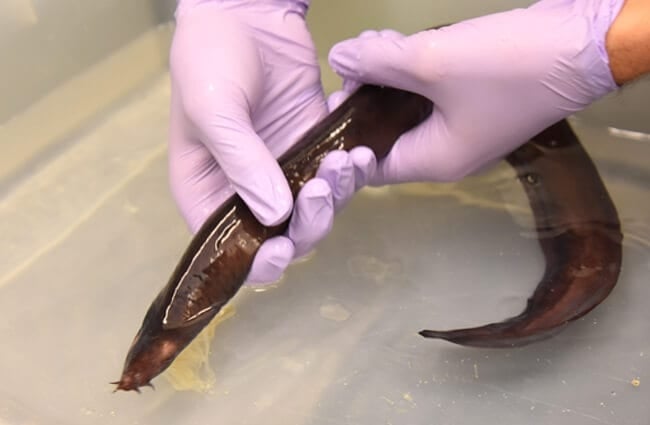
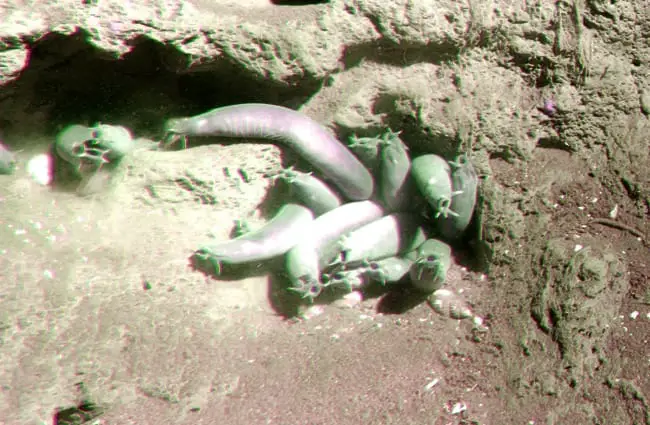
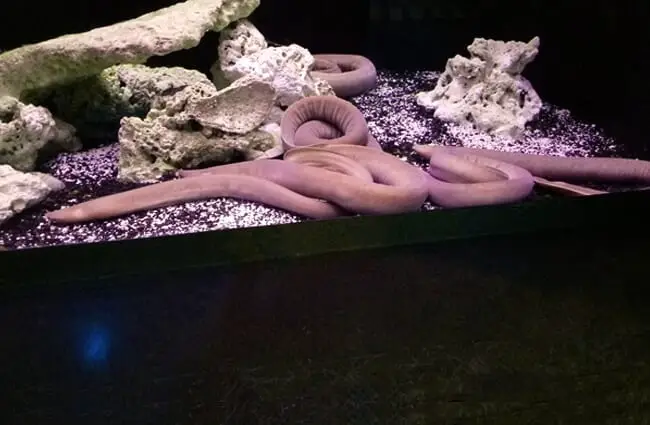

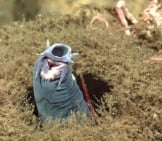
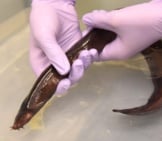
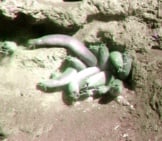

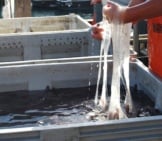
![Red Angus Closeup of a beautiful Red Angus cowPhoto by: U.S. Department of Agriculture [pubic domain]https://creativecommons.org/licenses/by/2.0/](https://animals.net/wp-content/uploads/2020/03/Red-Angus-4-238x178.jpg)












![Red Angus Closeup of a beautiful Red Angus cowPhoto by: U.S. Department of Agriculture [pubic domain]https://creativecommons.org/licenses/by/2.0/](https://animals.net/wp-content/uploads/2020/03/Red-Angus-4-100x75.jpg)

